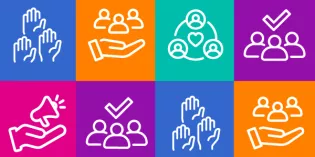We are responsible for delivering information and guidance regarding the paediatric workforce in the UK. We use research, data and evidence to advocate for child health services and workforce, with the ultimate aim of improving child health
The Workforce information and planning pages provide data and reports regarding the wider paediatric workforce and existing service configuration with information drawn from the workforce census we conduct, College surveys and external sources.
We also support the development of service standards, delivery of service reviews and respond to national workforce related consultations across the nations.
Our key priorities:
- Inform and influence workforce planning and service design using data analysis and dissemination
- Facilitate and enhance the recruitment process by monitoring yearly trainee numbers and vacancies.
- Provide guidance to improve and maintain a high-quality paediatric service, in particular focussing on consultant and trainee job planning, and rota gap management.
- Offer in depth knowledge of the current paediatric medical workforce using data modelling to support compliance with safe and supportive staffing models and new ways of working.
- Investigate key target areas of interest according to need.
You can contact us by email on workforce@rcpch.ac.uk
The Workforce Information team forms part of the Workforce and Careers team, along with Careers and Communities.










